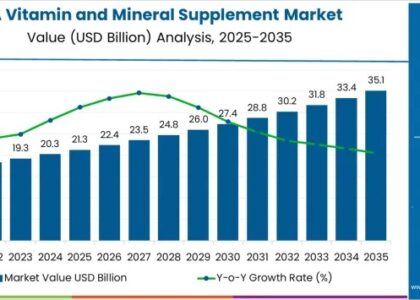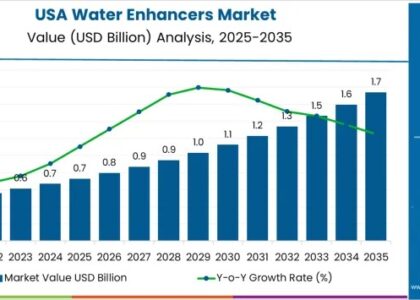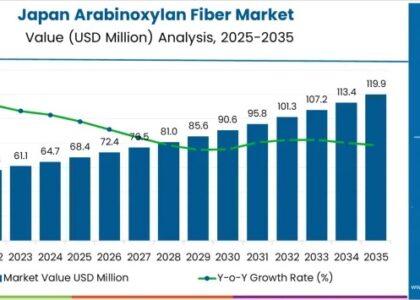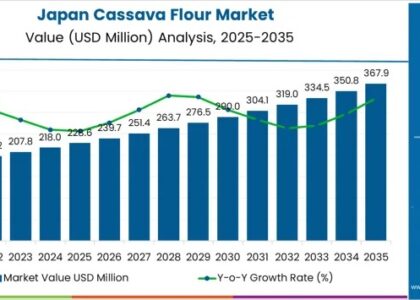Inflammatory Markers Market structure analysis discusses in detail Inflammatory Industry companies with their profiles, revenue shares in market, comprehensive portfolio of their offerings, networking and distribution strategies, regional market footprints, and much more.
Cancer and other chronic diseases are assessed using inflammatory markers. Inflammation-related disorders cause the inflammatory markers to rise. Interleukin and C reactive protein are the two most prevalent types of inflammatory indicators.
Rheumatoid arthritis, burns and tissue damage, Crohn’s disease, cancer, etc. are a few examples of prevalent inflammatory disorders.
One of the main causes of chronic inflammation is the introduction of an infectious organism, such as Mycobacterium tuberculosis, protozoa, fungi, or other parasites that can resist host defences and persist in the tissue for a lengthy period of time.
Additional causes of persistent inflammation include autoimmune illnesses, in which the immune system is hypersensitive, exposure to a low concentration of a specific irritant and foreign particles, and environmental factors. Repeated episodes of acute inflammation might lead to chronic inflammation.
Sample of Research Report @
https://www.futuremarketinsights.com/reports/sample/rep-gb-10251
Global Inflammatory markers Market: Overview
Based on product type, inflammatory markers market has been segmented into interlukins, C reactive proteins, lepitine, cellular adhesion molecules, tumor necrosis factors and others. Interlukins are expected to hold a large revenue share in the global inflammatory markers market.
Based on the indications, the global inflammatory markers market has been segmented into tumors, arthritis, multiple sclerosis, diabetes and various other applications. Tumors are expected to hold a large revenue share in the overall inflammatory markers market.
Based on the end user, the inflammatory markers market has been segmented into hospitals, clinics, research laboratories and others. Research laboratories are expected to hold a significant share in the global inflammatory markers market.
Inflammatory Markers: Market Insights
Inflammatory markers are used in the assessment of cancer and other chronic diseases. Inflammation markers raise in the inflammatory conditions. C reactive protein and interleukin are the most common form of inflammatory markers.
Some of the common inflammatory conditions include rheumatoid arthritis, tissue injury and burns, Crohn’s disease, cancer, etc.
Introduction of an infectious organism including mycobacterium tuberculosis, protozoa, fungi, and other parasites that can resist host defenses and remain in the tissue for an extended period, is one of the major cause of chronic inflammation.
Other causes of chronic inflammation include exposure to a low level of particular irritant and foreign particles, autoimmune diseases, in which the immune system is sensitized. Chronic inflammation can be caused due to repeated episodes of acute inflammation.
Request for Customization @
https://www.futuremarketinsights.com/customization-available/rep-gb-10251
Inflammatory markers: Market Dynamics
Increasing prevalence of cancer is one of the major factors, responsible for the significant growth of inflammatory markers market. Increasing population especially in developing regions and increasing prevalence of other chronic diseases, is expected to increase the growth of inflammatory markers market. Increasing research and developmental activities is another important factor which can drive the growth of inflammatory markers market.
Other factors such as increasing healthcare awareness, an increasing number of hospitals and research laboratories, etc. are expected to increase the growth of inflammatory markers market. Increasing government initiatives and increasing government funding for the research activities, is a very important factor which can increase the growth of inflammatory markers market.
An increasing number of diagnostic laboratories is expected to increase the growth of global inflammation markers market.
There are a few factors, which can restrain the growth of inflammatory markers market. Lack of healthcare awareness in some of the emerging regions is expected to increase the growth of the global inflammatory markers market.
Global Inflammatory markers Market: Region-wise Outlook
On the basis of geography, global inflammatory markers market is segmented into several key regions viz. North America, Latin America, Europe, East Asia, South Asia, Oceania and Middle East and Africa. North America is expected to hold the largest shares in the inflammatory markers market primarily due to presence of well-established healthcare infrastructure and the presence of large number of research laboratories Europe is expected to hold a large revenue share in Inflammatory markers market due to increasing population and increasing prevalence of chronic diseases.
Asian countries are also expected to hold a significant growth rate in the forecast period due to increasing healthcare awareness among the people.
Inflammatory markers Market: Key Players
There are many companies manufacturing inflammatory markers. Some of the key players present in Global Inflammatory markers market are Merck and Co., Novartis International AG, Abnova, Cayman Chemical, Thermo Fisher Scientific, Cell Signaling Technology, Inc., Boditech Med Inc., LSI Medience Corporation, Abbott Diagnostics Inc., Siemens Healthcare Diagnostics Inc., BG Medicine Inc., LifeSign LLC.
The report is a compilation of first-hand information, qualitative and quantitative assessment by industry analysts, inputs from industry experts and industry participants across the value chain. The report provides in-depth analysis of parent market trends, macroeconomic indicators and governing factors along with market attractiveness as per segments. The report also maps the qualitative impact of various market factors on market segments and geographies.
Request for Report Ask A Question @
https://www.futuremarketinsights.com/ask-question/rep-gb-10251
Segmentation by Product Type
- Interlukin
- Interlukin 6
- Interlukin 10
- Others
- C Reactive Protein
- Lepitine
- Cellular adhesion molecule
- Tumor necrosis factor-α
- Others
Segmentation by Indications
- Tumors
- Arthritis
- Multiple Sclerosis
- Diabetes
- Other Applications
Segmentation by End Users
- Hospitals
- Diagnostic Laboratories
- Research Laboratories
- Others
About Us
Future Market Insights (ESOMAR certified market research organization and a member of Greater New York Chamber of Commerce) provides in-depth insights into governing factors elevating the demand in the market. It discloses opportunities that will favor the market growth in various segments on the basis of Source, Application, Sales Channel and End Use over the next 10-years.
Contact Us:
Future Market Insights,
Unit No: 1602-006,
Jumeirah Bay 2,
Plot No: JLT-PH2-X2A,
Jumeirah Lakes Towers,
Dubai,
United Arab Emirates
For Sales Enquiries: sales@futuremarketinsights.com
Website: https://www.futuremarketinsights.com
LinkedIn| Twitter| Blogs





